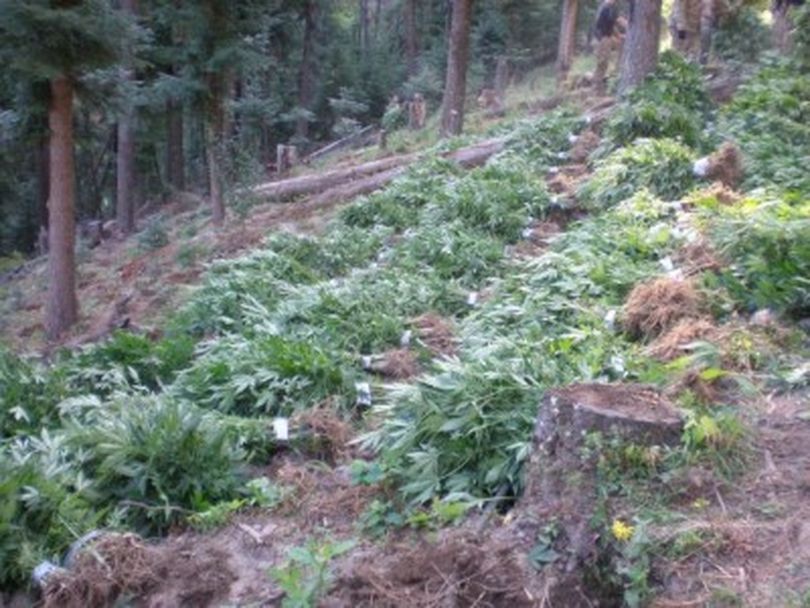National forest areas going to pot, official says

PUBLIC LANDS -- Marijuana cultivation sites in 20 states on 67 national forests have caused "severe" damage according to U.S. Forest Service director of law enforcement, David Ferrell.
"The illegal cultivation of marijuana on our National Forest System is a clear and present danger to the public and the environment," said Ferrell, testifying Wednesday before the Senate Caucus on International Narcotics Control.
"Many marijuana sites found on national forests are under cultivation by drug trafficking organizations that are sophisticated and include armed guards, counter-surveillance methods, logistics support and state-of-the-art growing practices," Ferrell said.
Washington and Oregon are among the states where major marijuana cultivation sites were discovered this year.
Ferrell gave an example from efforts in California where the Forest Service completed cleanup and restoration on 335 sites which resulted in the removal of more than 130 tons of trash, 300 pounds of pesticides, five tons of fertilizer and nearly 260 miles of irrigation piping.
Costs to clean up a site can reach $5,000 an acre, he said.
- A mile-long pot growing operation was busted this summer in the Wallowa Mountains of northeastern Oregon.
- The Wenatchee-Okanogan National Forests offered these tips to forest users after pot operations were busted this summer.
Read on for more details from Ferrell's report to Congress.
The effects of marijuana sites on natural resources are harsh. Native vegetation is cleared before planting. Thousands of feet of black tubing transport large volumes of water diverted from streams, lakes, and public drinking water supplies. An average size marijuana plot of approximately 1,000 plants requires up to 5,000 gallons of water daily.
Natural vegetation and wildlife are killed as growers use liberal doses of herbicides, rodenticides and pesticides, some of them banned in the U.S. These chemicals can cause extensive and long-term damage to ecosystems. Human waste and trash in the grow sites are widespread. Winter rains create severe soil erosion and wash the poisons, this waste and trash into streams and rivers -- including Congressionally-designated Wild and Scenic Rivers and National Recreation Areas.
Limited agency funds are impacted by the activity, costing approximately $5,000 an acre just to clean up a grow site. The restoration of the site to re-establish streams costs another $5,000 an acre. And yet another $5,000 an acre is needed to restore the area to its natural state. The typical marijuana site is between 10-20 acres.
The agency will continue to enhance partnerships with other federal, state, local and Tribal agencies in a cooperative effort to investigate and eradicate marijuana cultivation and other narcotic activities occurring on National Forest System lands, Ferrell said.
